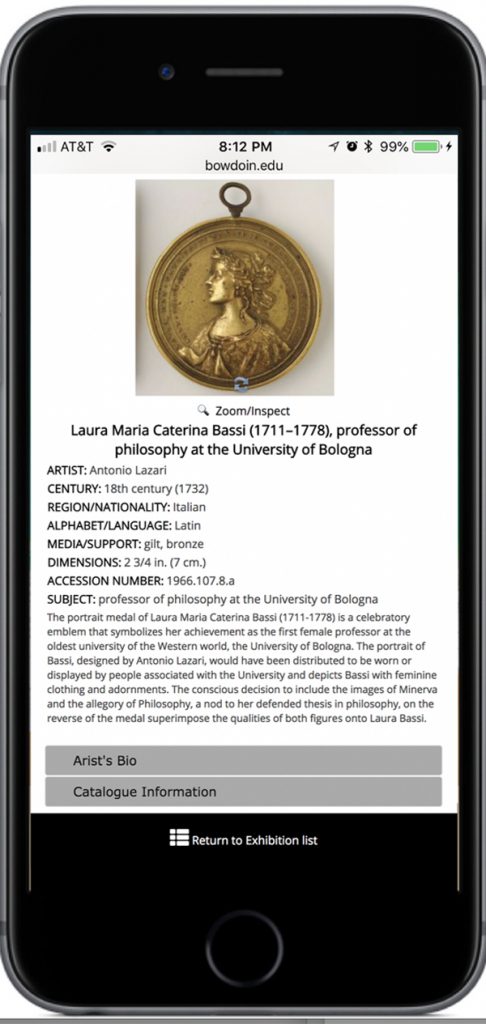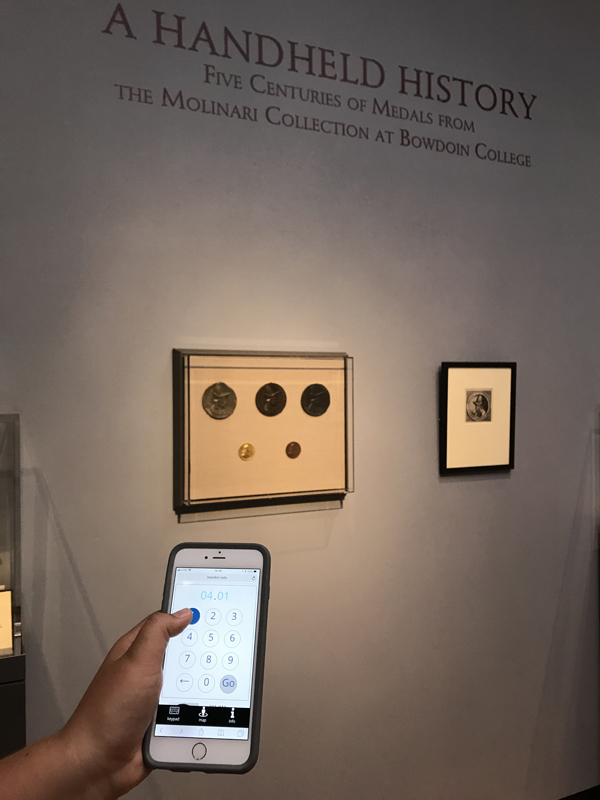A Handheld History on Your Handheld Device
By Bowdoin Museum of Art
On July 26, the Bowdoin College Museum of Art opened A Handheld History: Five Centuries of Medals from the Molinari Collection at Bowdoin College. Curated by students Amber Orosco ’19, Stephen Pastoriza ’19, and Benjamin Wu ’18, the show is inspired by the remarkable generosity and vision of Cesare Molinari d’Incisa and his wife, Amanda Marchesa Molinari. The installation features nearly seventy medals, representing selected highlights from the almost 1500 medals and plaquettes donated by the Marchesa in honor of her husband to the Museum over fifty years ago. These works present an overview of the aesthetic, historical, and political significance of medallic art from the fifteenth to the twentieth century.
In 1976, when the Molinari Collection was last the subject of an exhibition, the Museum produced an important catalogue authored by Andrea S. Norris and Ingrid Weber. The publication celebrated the commitment to intellectual erudition clearly valued by the Molinaris, whose contribution to the College included a distinguished library of rare books reflecting the evolution of numismatic scholarship from the sixteenth to the twentieth century.
Building on the documentation provided by Norris and Weber, the curators of the present exhibition have sought to take advantage of mobile technology to provide an interpretation of the handheld histories of five centuries of medallic art. Traditionally, the small scale of medals has made it challenging for museums to provide extensive labels for each piece, thus creating unintentional barriers for non-experts to appreciate these works of art fully. Through diligent work with staff at the Museum and in the College’s Academic Computing division, Orosco, Pastoriza, and Wu have contributed to the creation of an innovative web-based interface, designed by David Francis, Senior Interactive Developer, to help visitors access rich information about each of the medals on view.

By scanning a QR Code or entering a URL, and entering the corresponding number of each piece, exhibition audiences can supplement thematic labels for each case in the show with in-depth curatorial insights, artists’ biographies, and cataloguing data about specific objects. Thanks to generous support from an anonymous donor, which enabled the Museum to digitize the obverse and reverse of each of the Molinari medals, viewers can also rotate images of the medals on their screen. The photographic reproductions are also zoomable, enabling one to focus in on small details, further demonstrating the artistic mastery of these objects. Just as the makers and patrons intended audiences to have a tactile and intimate engagement with these works of art, now contemporary viewers can have an analogous experience through the use of their personal digital devices. We urge you to come and enjoy the enduring power of the Molinari medals and related pieces—and the stories they convey about intellectual achievement, personal virtue, and political might—all within the palm of your hand.